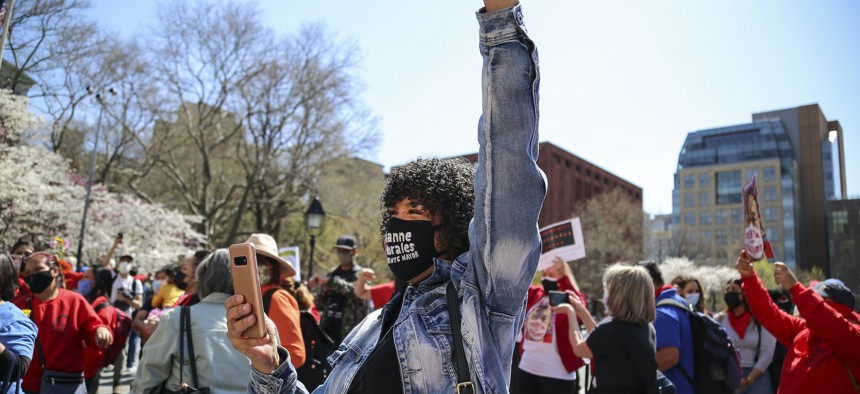“Who are your top five?” With weeks until voting starts in New York City’s primary election, it’s a question every major endorsement should answer – and so should the candidates.
New York City is about to run the largest ranked-choice voting election in U.S. history, but you wouldn’t know it from the way the campaigns are playing out so far. With rare exceptions, advocacy organizations and candidates alike have been running as if the only thing that matters is a voter’s top choice. And that leaves a lot of political power untapped.
Voters adopted ranked-choice, also known as instant-runoff, voting in city primaries in 2019. It will be used citywide for the first time this June. (Early voting starts June 12 and primary day is June 22.) Rather than choosing one candidate, voters rank up to five candidates in order of preference. Once the ballots are tallied, the candidate with the fewest first-choice rankings is eliminated, and voters who picked that candidate first have their votes counted for their next choice instead. This process continues until two candidates remain and the one with the most votes wins.
Ranked-choice can create new opportunities for coalition-building and help winnow a crowded field. But, as with any electoral system, the outcome depends on the campaigns candidates run, the messaging activists adopt and the choices voters make.
Right now, many groups are running the same old playbook.
Consider third-party endorsements. The United Federation of Teachers endorsed New York City Comptroller Scott Stringer. That is helpful if Stringer survives until the final round, but is the UFT really indifferent between every other candidate running for mayor? On the heels of sexual misconduct allegations against Stringer, which the comptroller denies, UFT members may be wondering who their next best option is. The same goes for the New York State Public Employees Federation’s endorsement of Brooklyn Borough President Eric Adams. By failing to endorse a “top five” list of candidates, these groups are leaving an immense amount of political influence on the table and leaving their members to sort out the differences between the remaining candidates on their own.
Other organizations have endorsed a list of “top two” or “top three” preferences. For example, the Stonewall Democratic Club endorsed Stringer, Morales and McGuire, and the Working Families Party endorsed Morales and Wiley (after dropping Stringer from their ranked endorsement). These organizations might think a top-five list is too unwieldy and a shorter list will help cut through the noise. That may be so, but endorsers should think carefully about the risks of omitting fourth- and fifth-place recommendations: If none of your top two or three make it to the last round, do you really want voters who followed your lead to leave the rest of their ballots blank and play no part in the final decision?
Candidates need to ask themselves this same question. In a traditional, single-choice primary, contenders who are trailing in the polls sometimes drop out to endorse an ideological ally. In a ranked-choice election, candidates can stay in the race and stillendorse allies who share their platform. For example, in the waning days of San Francisco’s 2018 ranked-choice mayoral race, two trailing candidates who had been endorsed first and second by the San Francisco Democratic Party – Mark Leno and Jane Kim – combined forces, asking their supporters to rank each other first and second. The duo ultimately failed to overtake the frontrunner in that race, but their effort came extremely close, with the vast bulk of Kim’s votes flowing to Leno in the final round.
A similar strategy could pay off in New York City’s Democratic primary. Polling reveals a divided field. While many voters are still undecided, any candidate who isn’t courting second (third, fourth, or fifth) choices is leaving votes on the table. In the United States, 67% of RCV voters rank at least two candidates, and that number can rise to 90% for big elections such as mayor.
In other words, candidates who share a similar vision might want to start communicating that point – letting voters know who the “next best” options on the ballot are. Rather than ideological allies attacking each other in the closing days of the campaign, they could do better by lifting each other up.
Thursday night’s mayoral debate offers a prime opportunity to ask each candidate: “Who are your top five and why?”


